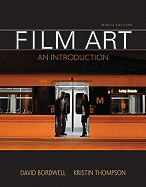 Cinema allows audiences to:
Cinema allows audiences to:
Film -
Bordman and Thompson book: Film Art | Definitions | Origins of cinema | Market share | A case study
Film or cinema is the technical simulation of action which when viewed on a large screen and accompanied by music and sound conveys the illusion of a larger than theatrical stage performance.
A film's presentation relies on the participant's suspension of disbelief and willingness to follow cues, prompts, deliberate action, or explicit dialogue suggesting a plot that artificially reinforces the notion of a beginning, a mid point and an ending."But how do films do that?
"To answer that question …where do movies come from? Most basically, they come from three places. They come from the imagination and hard work of the filmmakers who create them. They come from an extraordinarily complex set of machines that capture and relay images. And they come from companies and individuals that pay for the filmmakers and the technology."
Film Art, p. 3.
![]()
"Film is a young medium, at least compared to most other media. Painting, literature, dance and theatre have existed for thousands of years, but film came into existence only a little more than a century ago."
"... film depends on complex technology."
p. 1.
A series of still photographs taken sequentially and run --in timed sequence-- giving the illusion of movement.
 David Bordwell & Kristin Thompson, Film Art: An Introduction. New York: McGraw Hill, 2010. 9th Edition.
David Bordwell & Kristin Thompson, Film Art: An Introduction. New York: McGraw Hill, 2010. 9th Edition.
"Distribution companies form the core of economic power in the commercial film industry. Filmmakers need them to circulate their work; exhibitors them to supply their screens.
"These firms provide mainstream entertainment to theaters around the world. The films they release account for ninety-five percent of the ticket sales in the United States and Canada, and about half of the international market."
p. 34.
Raiders of the Lost Ark (1981)
Pauline Kael on her response to this film's value.